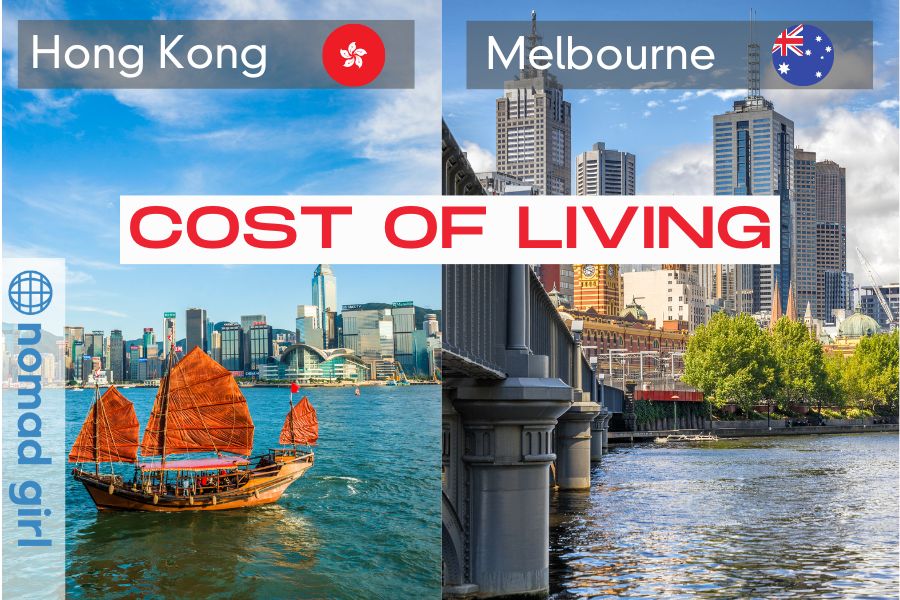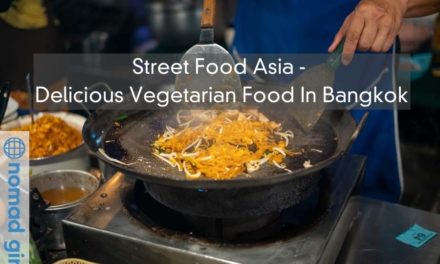Hong Kong is known for its high cost of living, particularly when compared to other cities in Asia. In fact, according to the recent Mercer’s Cost of Living Report, Hong Kong ranked as the third most expensive city to live in worldwide in 2015. Additionally, its rental market is listed as the second highest in the world, just after Monaco. This raises the question of how Hong Kong’s cost of living compares to cities in Australia, and just how expensive it is for expatriates living and working in Hong Kong.
This post provides an overview of the cost of living in Hong Kong VS Melbourne, Victoria, Australia. It aims to give ex-pats considering a move to Hong Kong a better understanding of both major and everyday living expenses.
It is important to note that the cost of living in Hong Kong for families may vary significantly from my perspective as a single female. This is because there are additional expenses and lifestyle factors specific to families that I have not addressed in my post. These factors may include costs related to schooling, daycare, nannies, after-school care, and specialty grocery items, among others.
Rent
When considering the cost of living in Hong Kong, it is important to take into account the property market. Rental prices can vary depending on the location, with higher prices in areas like Central, SoHo, Mid-Levels, Wan Chai, and Causeway Bay on Hong Kong Island. On the other hand, the northeast of Hong Kong Island and the mainland offer more affordable options. Rent is typically paid on a monthly basis, and leases are commonly offered for 1 or 2 years, usually requiring a 1-month deposit, which is a common practice in many Asian cities.
Rent prices in Hong Kong are influenced by factors such as location, personal preferences, and budgetary considerations. Opting to live closer to the central business district (CBD) offers the advantage of being at the heart of the city’s bustling activities, potentially reducing commuting time. On the other hand, residing further away from the CBD may result in longer commutes; however, the availability of affordable and efficient public transportation alleviates this concern.
I currently reside in a recently constructed, spacious apartment complex located on the mainland. The apartment offers three bedrooms, two bathrooms, a cozy balcony, a well-equipped kitchen, a generously sized living-dining area, and a convenient laundry room. The complex boasts an array of amenities such as three pools (both indoor and outdoor), three fully equipped gyms, a relaxing sauna and spa, a daycare center, a children’s playroom, a library, study rooms, mail collection services, rooftop gardens, and inviting outdoor living spaces. Additionally, the complex ensures round-the-clock security with a substantial number of staff members dedicated to safeguarding both the interior and exterior of the premises.
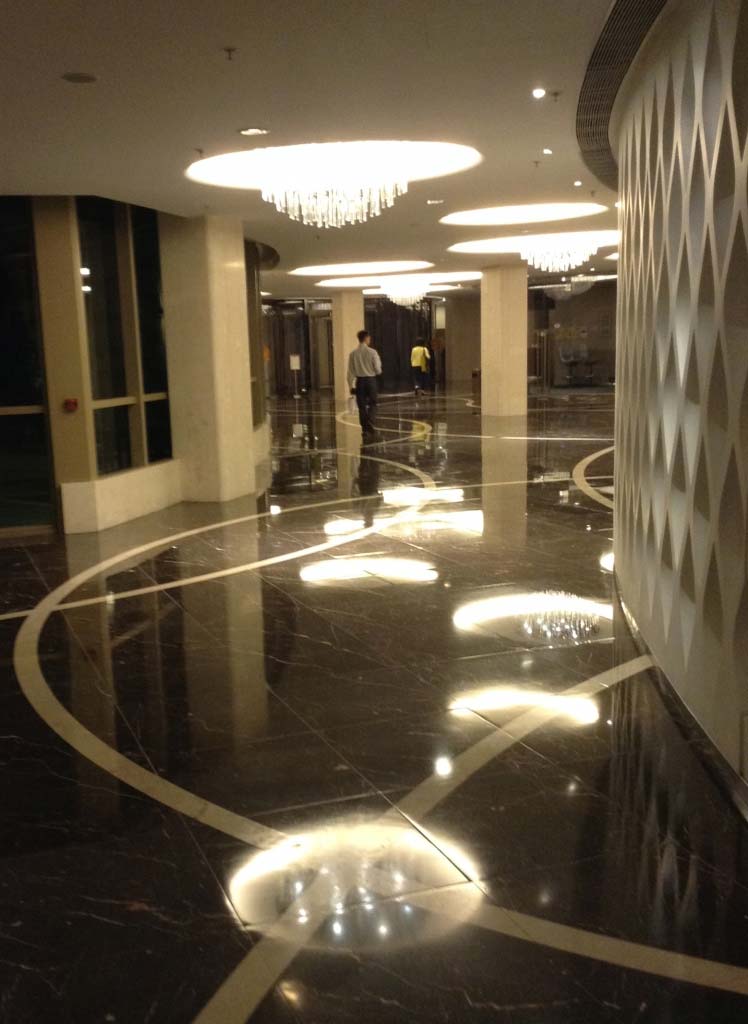
Entrance to my apartment
In order to maximize our budget, my roommate and I decided to share an apartment on the mainland instead of renting on Hong Kong Island. By doing so, we were able to find a high-quality apartment with all the desired amenities for the same price that we would have paid for an older, smaller apartment on the island. Currently, our monthly rent is $19,000 HKD, equivalent to $2945 AUD, excluding additional expenses such as power, water, and internet bills.
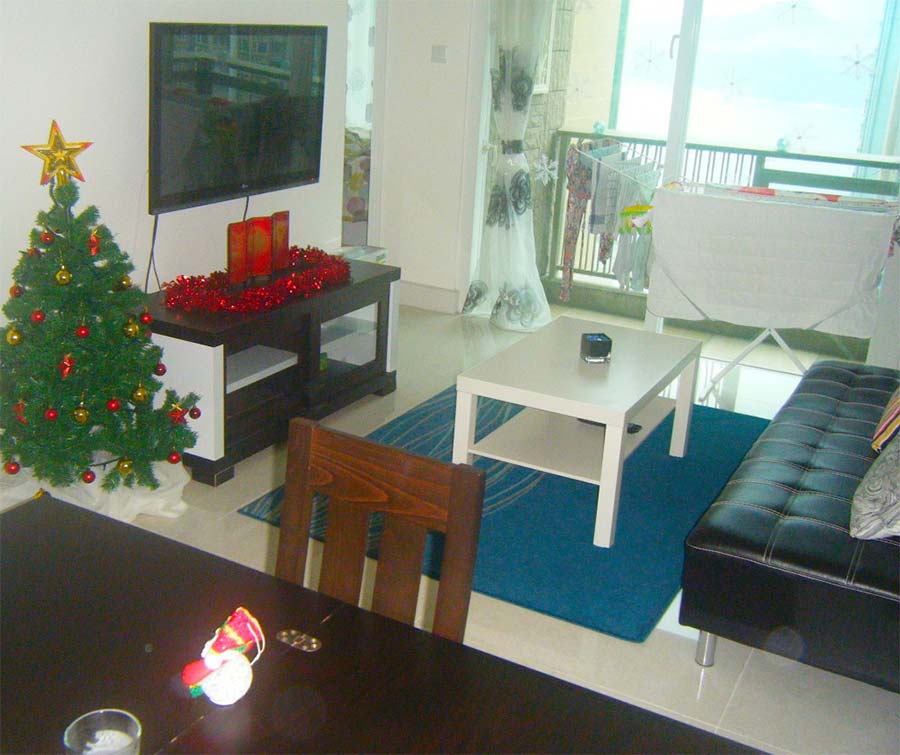
Lounge and Dining Size Area of my three-bedroom apartment
If you are looking to rent your own apartment in Hong Kong, there are various online platforms available to assist you in your search. One option is to visit websites like GeoExpat, which provide comprehensive listings of available apartments. Additionally, you can also conduct a simple Google search using keywords such as “Hong Kong apartments for rent” to explore further options.
The table below provides a comparison between Hong Kong Island, Kowloon, and Melbourne’s Inner City and Outer Suburbs.
Cost of living in Hong Kong vs Melbourne Rental Properties *2015
| Location In Hong Kong | Apartment/House Size | Price Per Month |
| Kennedy Town, Hong Kong Island | 2 bedroom older style apartment (no facilities) | $14,000HKD ($2170 AUD) |
| Happy Valley, Hong Kong Island | 2 bedroom modern apartment | $35,000HKD ($5426 AUD) |
| Sheung Wan, Hong Kong Island | 1 bedroom apartment loft style modern | $50,000 HKD ($7752 AUD) |
| Soho, Hong Kong Island | 1 bedroom apartment with terrace | $45,000 HKD ($6977 AUD) |
| Tai Kok Tsui, Kowloon (Hong Kong Mainland) | 2 bedroom apartment with balcony | $19,000 HKD ($2945 AUD) |
| Kowloon, Hong Kong Mainland | 3 bedroom 2 bathroom apartment | $32,000 HKD ($4961 AUD) |
| Location in Melbourne | ||
| Inner City, Melbourne | 1 bedroom 1 bathroom apartment | $1,440.00 AUD |
| Inner City, Melbourne | 2 bedroom, 1 bathroom | $1,920.00AUD |
| Essendon, Melbourne | 2 bedroom 2 bathroom | $1,480.00 AUD |
| Sunshine, Melbourne | 2 bedroom, 1 bathroom | $840.00 AUD |
| Yarraville, Melbourne | 2 bedroom 1 bathroom | $1,100.00 AUD |
When searching for rental options in Hong Kong, it’s important to note that if you don’t need an entire apartment to yourself and are open to sharing with others, you can easily find rooms for rent. These rooms are often advertised in the classified sections of various online ex-pat websites.
If you are searching for housing, be sure to check out the GeoExpat Housing Classified. hongkong.geoexpat.com/classifieds/apartments
Introducing FindYourRoomInHongKong, a Facebook Group dedicated to advertising apartments and rooms for rent in Hong Kong. Join this group to easily find your ideal living space in the city. www.facebook.com/groups/128363737251373/
Electricity and Water Costs
The cost of electricity and water for a two-bedroom apartment can vary depending on factors such as your usage, how often you are home, and if you use an air-conditioner and heater. On average, you can expect to pay around $1500HKD per month (approximately $232 AUD).
When living alone in Australia, the average monthly cost of electricity is around $200 (paid every three months, totaling around $600 AUD per bill). The water bill, paid quarterly, would amount to approximately $500 AUD. In comparison, the cost of electricity and water in Hong Kong is more affordable, totaling around $232 AUD. This is significantly lower than the $325 AUD I was charged in Australia.
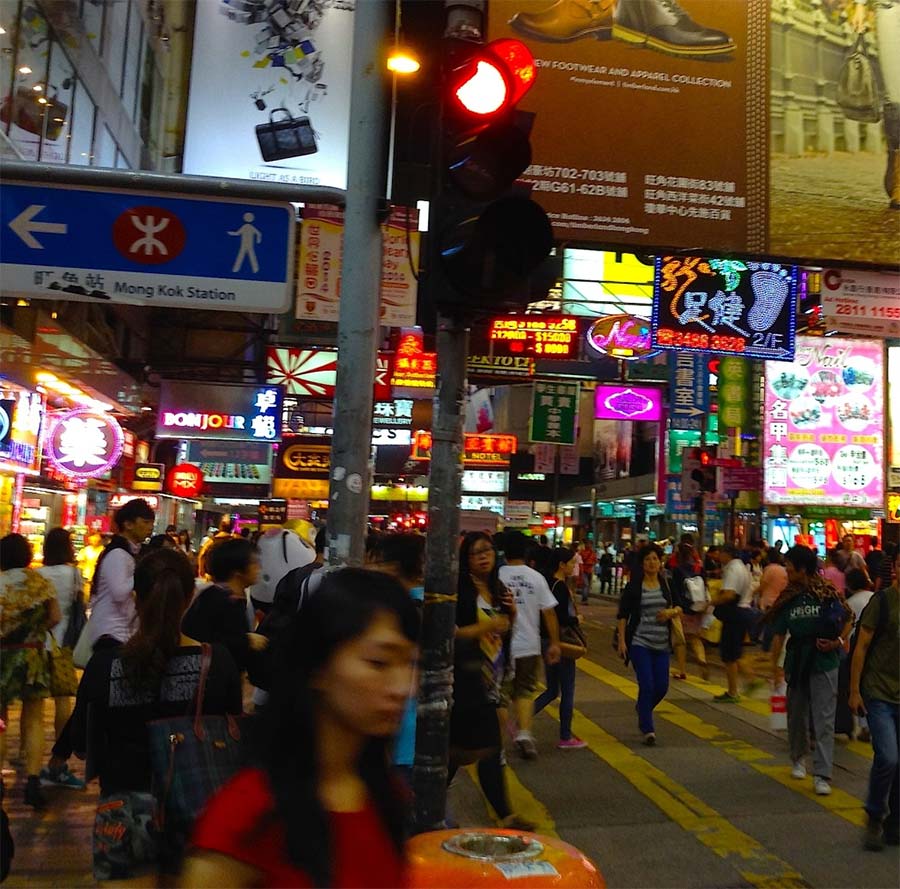
The metro is well signed posted, with gate exit/entry signs posted right around each station
Transport
Hong Kong boasts a highly efficient and cost-effective transport system. The metro network connects Hong Kong Island, Kowloon, the New Territories, and even extends to Shenzhen in China. With its comprehensive coverage of major suburbs, the metro is known for its cleanliness, orderliness, and punctuality.
Purchasing an Octopus Card at the airport, conveniently located just outside the arrival gate, or at any 7Eleven store can result in substantial savings for your transportation needs in Hong Kong. Whether you are visiting for a short period or planning to stay for a few weeks, investing in an Octopus Card is highly recommended. It offers discounted fares for both MTR and bus travel, making it a worthwhile and cost-effective choice.
Ticket prices for short journeys start at 3.3HKD, which is equivalent to less than 50 cents in Australian currency. For longer journeys lasting an hour, the ticket price is under $3 AUD, while shorter trips of approximately 40 minutes cost under $1 AUD.
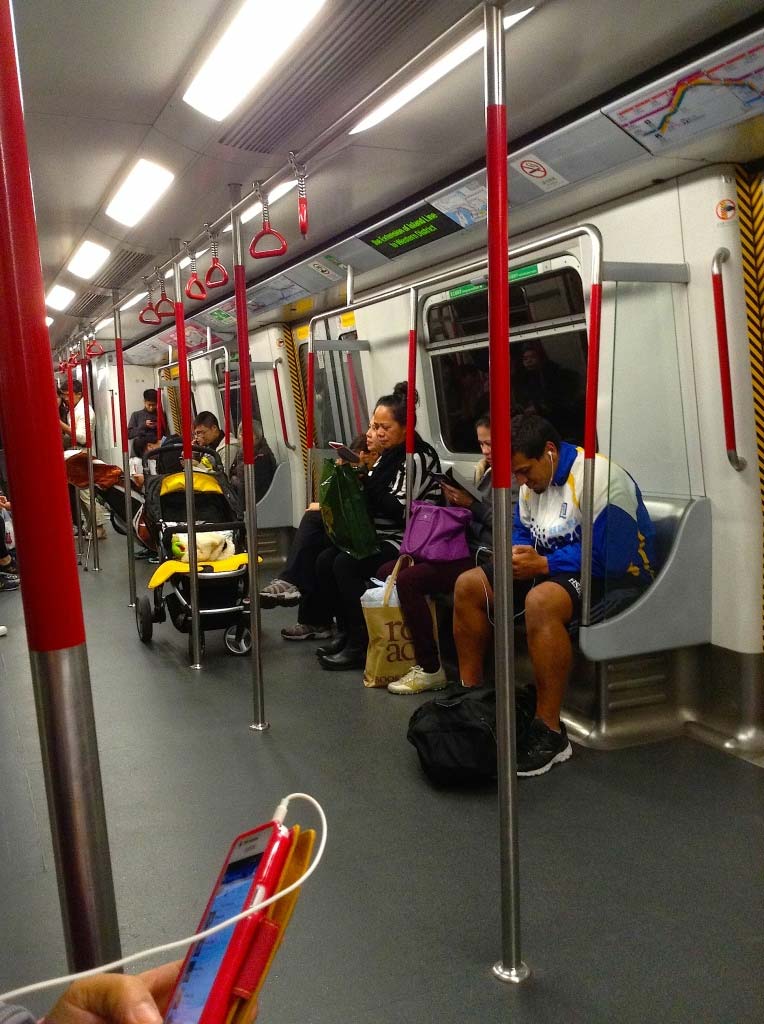
Trains are only ever empty on Sunday night
The metro system is complemented by an extensive network of coach and minibus services, providing convenient connections for residents in smaller areas to reach the metro stations. A minibus journey of approximately 30 minutes typically costs less than 0.50 AUD.
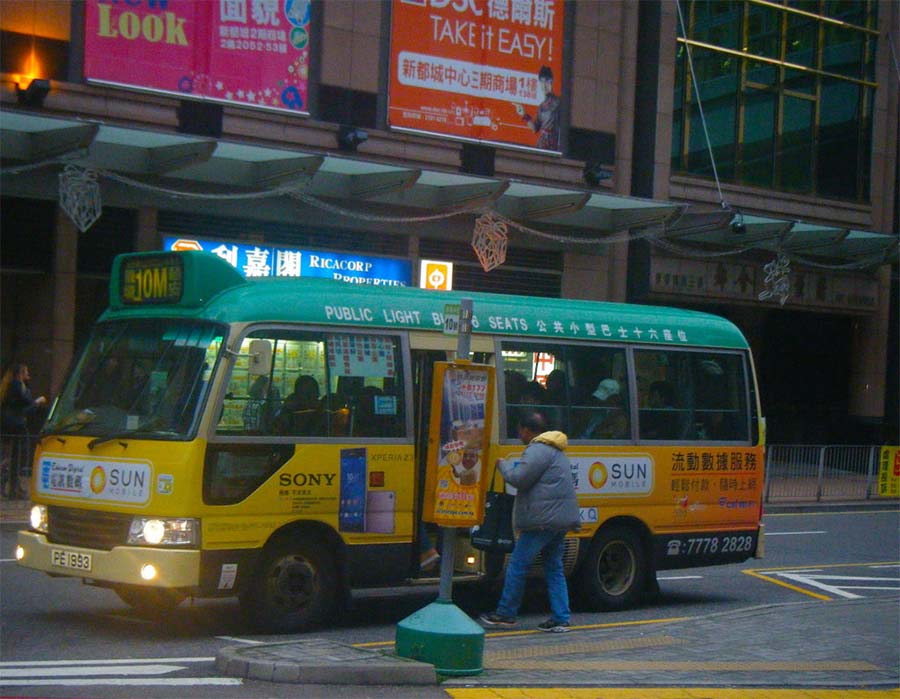
Mini-buses are a great way of taking short trips between MTR Stations
In Hong Kong, taxis are known for their affordability and reliability, making them a better option compared to the taxi services available in Melbourne. The fares in Hong Kong start at a fixed cost of approximately $2.50-$3 AUD.
In Hong Kong, there is an airport link that connects the central district of Hong Kong Island. It takes less than an hour to travel and costs approximately $4 AUD. When comparing this to the public transport shuttle bus in Melbourne, which charges over $18.00 AUD for a one-way ticket, it is evident that Hong Kong’s public transport is significantly more affordable than Melbourne’s.
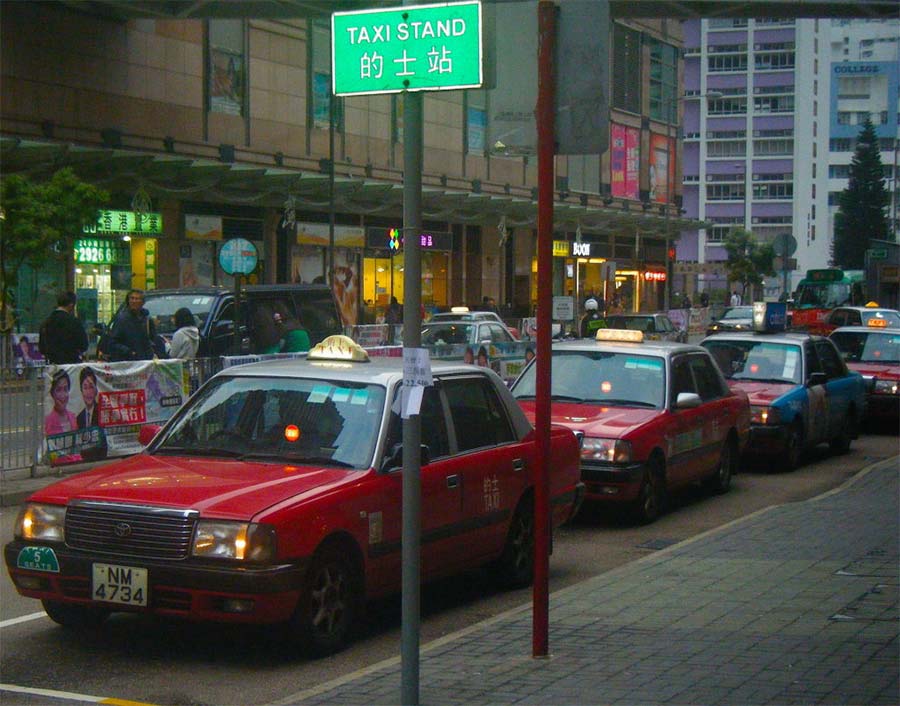
Old red taxis of Hong Kong
Grocery Shopping
The prices at supermarkets can vary depending on the types of food you prefer. Generally, products like meat, dairy, and packaged imported western items have similar prices, sometimes slightly higher, compared to those found in Australian supermarkets.
In Hong Kong, local products, fresh fruits, and vegetables are much more affordable than those found in Australian supermarkets. As a vegan, I personally find the prices at Hong Kong supermarkets to be quite reasonable compared to the ones I usually shop at in Australia. However, individuals who often buy imported products and meat might find that prices are similar to those in Australia.
In this article, I provide a brief overview of the typical prices for common grocery items in Hong Kong and Melbourne. I focus specifically on the prices found at ParkNShop and Woolworth, two popular grocery stores. By comparing the cost of living in these two cities, readers can gain a better understanding of the financial aspects associated with grocery shopping in Hong Kong and Melbourne.

| Food Item | Cost in Hong Kong | Cost in Australia |
| 6 large apples | 7.90HKD ($1.22) | $5.89 |
| 6 Large oranges | 18HKD ($2.79) | $2.50 |
| 1kg Banana | 8-10HKD ($1.24-$1.50) | $3.50 |
| 1kg Tomatoes | 15HKD ($2.33) | $5.88 |
| 1kg bag of carrots | 5-7HKD (78c-$1) | $2.10 |
| 1kg Potatoes | 8.00HKD ($1.24) | $4.30 |
| Fresh Spinach | 13HKD ($2) | $4-5 |
| Broccoli (2 heads) | 16HKD ($2.48) | $3-4 |
| 500gram bag of almonds (imported USA) | 45-60HKD ($7-9.30) | $13.75 |
| 1 can of chickpeas (imported Italy) | 16-18HKD ($2.48-2.60) | $2.30 |
| loaf of white bread | 14HKD ($2.17) | $3.39 |
| 12 carton of eggs | 21.50HKD ($3.30) | $6-9.00 |
| 1 Lt of dairy milk (imported AUS) | 21HKD ($3) | $1.25 |
| 1 litre of almond milk (imported USA) | 22HKD ($3.40) | $3.86-$4.20 |
| 1kg bag of rice | 15HKD ($2.33) | $2.50 |
| 500 gram pack of pasta | 15-30HKD ($2.33-$4.65) | $2.00 |
* Supermarket Chain and ParkNShop Supermarket, conveniently located in various areas of Hong Kong including Hong Kong Island, Kowloon, and the New Territories, offer affordable prices for shoppers. While their selection of speciality imported products may be limited, they still provide great value for money.
Eating Out
While living in various Asian countries, I noticed that I relied heavily on dining out instead of cooking at home. However, in Hong Kong, where I currently reside, I have found it challenging to locate vegetarian restaurants near my neighborhood or the three main areas I frequently visit on Hong Kong Island and the mainland.
If you have specific dietary requirements or are not a vegetarian, you will be delighted by the wide variety of cuisines available. You will probably find yourself eating out more frequently than I have during my time here.
In the city markets, you’ll come across small noodle stalls selling bowls of noodle soup for approximately $3-4 AUD. The soup usually contains a meat stock, although other ingredients may be present. For an affordable sit-down meal at a local restaurant, expect to pay around $10. This price typically includes a meat dish, a side, rice, and a beverage. However, it’s important to note that vegetarian options may be limited at these smaller Chinese restaurants, as meat dishes are the most popular and widely available in Hong Kong.
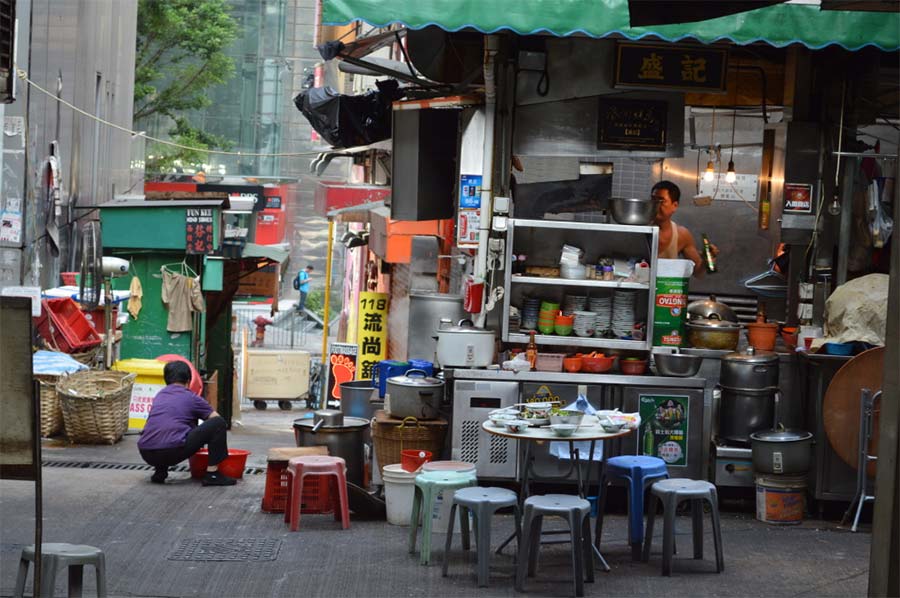
If you’re planning to dine at a mid-range restaurant in Melbourne, be prepared to spend around $100-300HKD per person ($15- $46 AUD) for a three-course meal. The cost may vary depending on factors such as the type of cuisine, the restaurant, and its location. It’s worth noting that these prices fall within the lower end of the spectrum for dining out in Melbourne, particularly for chain restaurants. On the other hand, mid-range restaurants in the city tend to be relatively more expensive.
Fast-food chain restaurants and commercial packaged and quick snack foods
NomadGirl.co has compiled a comparative list of prices for common food items in chain restaurants, highlighting the differences in cost of living between Hong Kong and Melbourne, Australia in 2016.
| Snack Food | Price in Hong Kong | Price in Australia |
| Big Mac Meal at McDonalds (beef burger with fries and a cola) | 31HKD ($4.81) | $5.69 |
| Sausage McMuffin with egg (McDonalds, with fries and cola/juice) | 30HKD ($4.81) | $4.90 |
| KFC Combo meal (chicken/or burger with drink and a side) | 36HKD ($5.50) | $8.80-$10 |
| A can of soft drink from corner store (330ml) | 8HKD ($1.24) | $2.20 |
| Bottle of water 1.5Ltr | 8- 10 ($1.24-1.55) | $3.00 |
| A bag of crisps (single serve) | 10HKD ($1.55) | $1.20.$2.10 |
| Prepackaged snack foods 7Eleven (noodle bowl, dumplings, sushi) | 8-30HKD ($1.24-$4.60) | (pie at gas station $4-5.00). |
Drinking
When indulging in alcoholic beverages, the cost can accumulate. The prices of cocktails, beer, and wine in Hong Kong’s Nightlife district are comparable to those found in Melbourne’s city bars and clubs.
In Hong Kong, the price of alcohol sold in supermarkets and convenience stores like &Elevens is much cheaper compared to Australian liquor stores. For instance, a bottle of pre-mixed vodka like Cruiser can cost around $5-9 in Australian stores, and even more if bought in a bar (around $12). However, in Hong Kong, you can buy the same bottle for less than $3 AUD, and in more affordable bars or clubs for under $6. Generally, alcohol prices in Hong Kong are lower than those in major cities across Australia.
Movie Tickets
In Hong Kong, movie ticket prices can vary based on factors such as the cinema, location, seat class, and screen. Typically, movie tickets for films range from approximately 70-120HKD ($10.85- $20.16), which is comparable to the prices you would find in Australian cinemas (where the average ticket price is usually around $18).
Conclusion
Hong Kong has significantly higher housing costs compared to Melbourne and other major cities in Australia. However, in terms of everyday living expenses like groceries, entertainment, and tickets to tourist attractions and events, Hong Kong tends to be less expensive. The public transport system in Hong Kong surpasses that of any Australian city in terms of efficiency, cleanliness, ease of use, access to all areas of the city, and affordability.

The bright lights of Hong Kong Island


